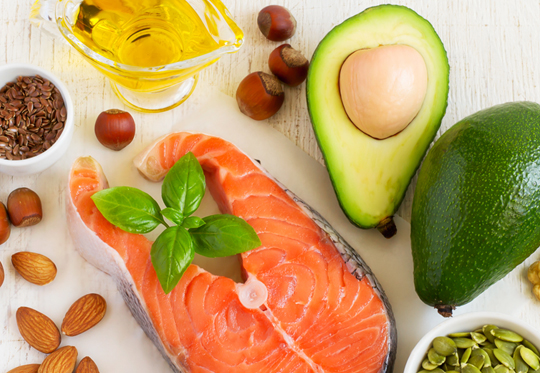





“Fat intake” might sound like a strange part of a diet plan, but people need to become “fat conscious” or aware of the fat content of their foods. As with carbs, there are good and bad fats. Bad fats contain large amounts of partially-saturated, saturated and trans-fatty acids. You find these things in processed, fried foods, beef, pork, lamb, cheese, cream and butter.
Want a shock? Pick up the packages of your favorite foods and scan the nutrition panels. Anything that is more than 20% fat by calories means you’ll be overloading your body with more fat than you want. (More about reading these panels for fat content will be explained later.) Bad fats can raise inflammation in the body, which over time, contributes to chronic diseases.
Good fats, on the other hand, are fats which are unsaturated (e.g., olive oil) and/or contain “essential fatty acids” (e.g., fish oil) which our bodies cannot make on their own, but play a role in virtually every function in the body. EFAs are anti-inflammatory and promote health.

HEALTHY FATS LIST:
FLAXSEED OIL
SALMON, MACKEREL, SARDINES
FISH OILS
WALNUTS, ALMONDS, CASHEWS, OTHER NUTS and SEEDS
AVOCADOS
OLIVE OIL
You can still get chubby on good fats. They’re not “free foods” by any stretch. But in small amounts, they’re an important part of our diet. Unfortunately, many good fats naturally found in our food supply are destroyed during processing and cooking. To make sure you’re getting enough good fats in your diet, add a tablespoon of fish oil, olive oil, or a small handful of nuts to one or two of your daily meals. A half to 3/4 of avocado works great also.
HEALTHY FATS – How Much?
NUT BUTTER – natural-style or organic – 1 tbsp
OILS – olive, safflower, coconut, flaxseed – 1 tbsp
NUTS – almonds, walnuts, pumpkin seeds, peanuts
– Males – 15 nuts (21g)
– Females – 10 nuts (15g)
AVOCADO – 1/2